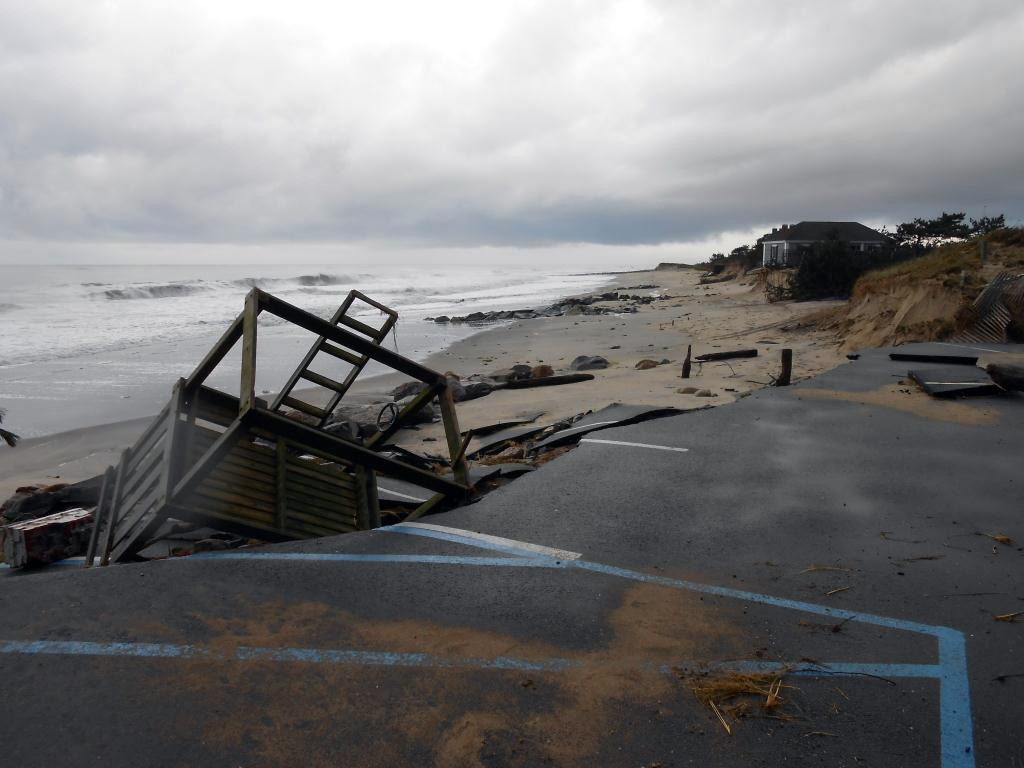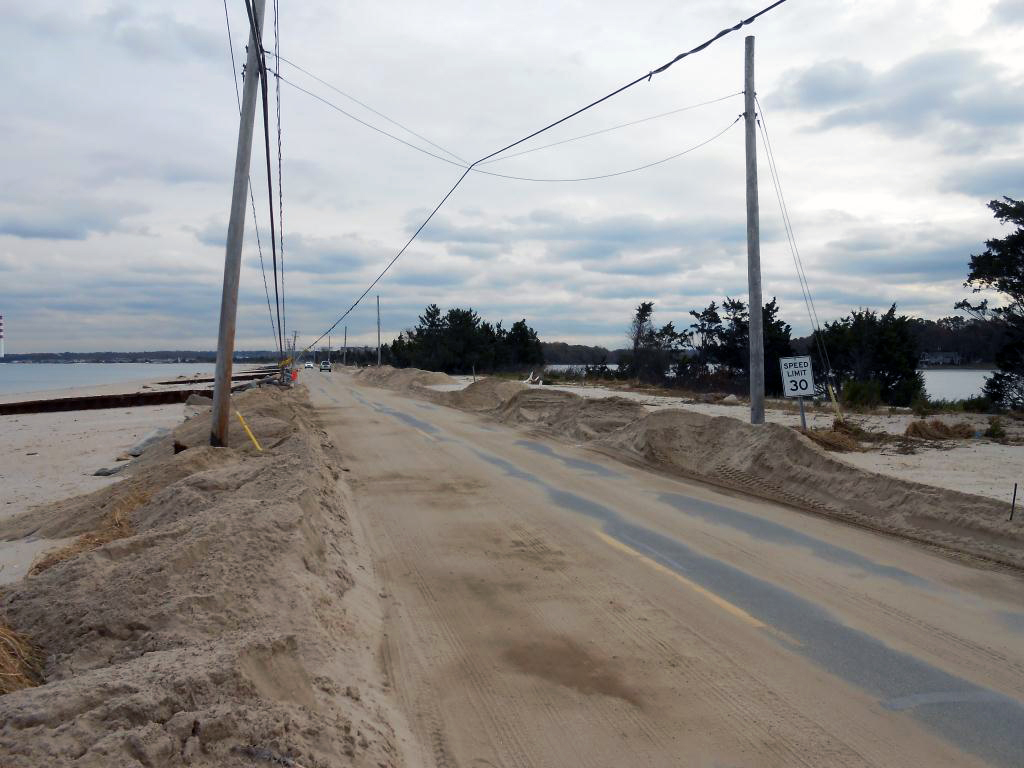Contact: Marjorie.Weisskohl@boem.gov
703-787-1304

New York (below), post-Hurricane Sandy, November 1, 2012.
Photos by: Barry Pendergrass, New York Department of State.
As part of President Obama’s continuing commitment to help coastal communities recover from Hurricane Sandy and promote resilient coastal systems, the Bureau of Ocean Energy Management (BOEM) and the State of New York have signed a cooperative agreement totaling $400,000 to identify sand resources for coastal resilience and restoration planning. The agreement will help BOEM and New York conduct research that will help coastal communities recover from Hurricane Sandy, restore habitat, increase our knowledge of sand resources offshore New York, and contribute to long-term coastal resilience planning efforts.
The New York Department of State Office of Planning and Development, with support from the State University of New York (SUNY) Stony Brook University, School of Marine and Atmospheric Sciences, will focus on assessing sand resources that may be available to support a range of potential future activities, including shoreline rebuilding and habitat restoration efforts. Focusing three to eight miles offshore of Long Island’s Nassau and Suffolk counties’ coastline, the New York researchers will review existing marine geological studies to assist BOEM in identifying sand resources that can be included as a component of State coastal resilience and restoration planning. Using computer models the researchers will also study the effects of sand dredging on the wave and natural sediment movement of the ocean bottom.
“Strengthening our partnership with New York comes at an important time, when they are working to recover from the impact of Hurricane Sandy and build resilience for the future,” said BOEM Acting Director Walter Cruickshank. “We are committed to continuing to work in a collaborative manner to help local communities withstand damage from future storms.”
“As New Yorkers continue to rebuild their lives after Superstorm Sandy, it is critical to know what resources are available to help us create stronger and more resilient communities,” said New York Secretary of State Cesar Perales. “We are extremely pleased to be partnering with BOEM, SUNY, and other agencies and look forward to working with them to identify sand resources that could help our shoreline withstand increasingly strong storms.”
 BOEM scientists will assist New York over the course of this two-year agreement to identify areas to study for future geophysical and geological surveys, with the purpose of confirming previously identified sand resources and locating new potential areas of sand resources. BOEM will also help New York develop tools to more readily share sand resource data with other agencies involved in coastal resilience planning.
BOEM scientists will assist New York over the course of this two-year agreement to identify areas to study for future geophysical and geological surveys, with the purpose of confirming previously identified sand resources and locating new potential areas of sand resources. BOEM will also help New York develop tools to more readily share sand resource data with other agencies involved in coastal resilience planning.
Such activities are essential for reducing potential storm damage to the residents, economies, and infrastructure of New York’s coastal areas. Research funded under this agreement will help ensure that future activities, potentially including offshore dredging and beach nourishment, are conducted in a sustainable manner that is compatible with natural sediment transport and biological processes, as well as stakeholder interests.
This agreement is part of a series of partnerships with coastal Atlantic states using part of the $13.6 million allocated to BOEM through the Disaster Relief Appropriations Act of 2013. The research will identify sand resources that are appropriate for coastal protection and restoration along the entire Atlantic Outer Continental Shelf (OCS).
Since Hurricane Sandy struck, BOEM has been working with the U.S. Army Corps of Engineers, other members of the Federal government’s Hurricane Sandy Task Force, state coastal planning agencies, state geological surveys and other entities to analyze the needs for coastal restoration and to develop restoration plans.
BOEM has the authority to convey, on a noncompetitive basis, the rights to resources for shore protection, beach or wetland restoration projects, or for use in construction projects funded in whole or part, or authorized by the federal government. In exercising this authority, BOEM may issue a negotiated non-competitive lease agreement for the use of OCS sand to a qualifying entity.
Over the past 20 years, BOEM has invested more than $30 million to identify non-energy resources on the OCS, conduct world-class scientific research, and lease OCS resources to coastal communities in need. Information from environmental research and resource identification has informed environmental assessment and leasing decisions concerning the use of OCS sand resources in beach nourishment and coastal restoration. For more information on BOEM's Marine Minerals Program, visit: http://www.boem.gov/Marine-Minerals-Program/.
BOEM promotes energy independence, environmental protection and economic development through responsible, science-based management of offshore conventional and renewable energy and marine mineral resources.
